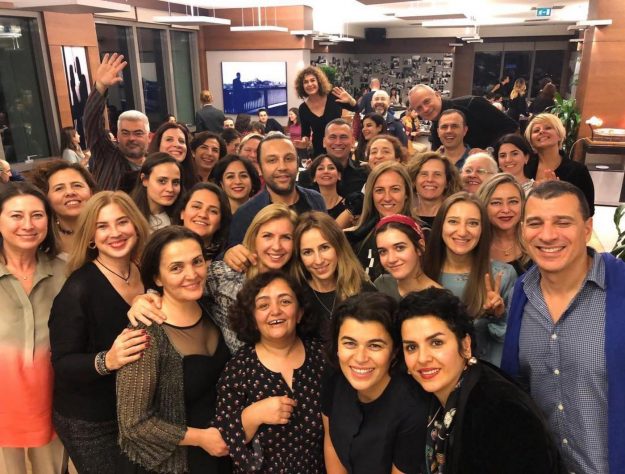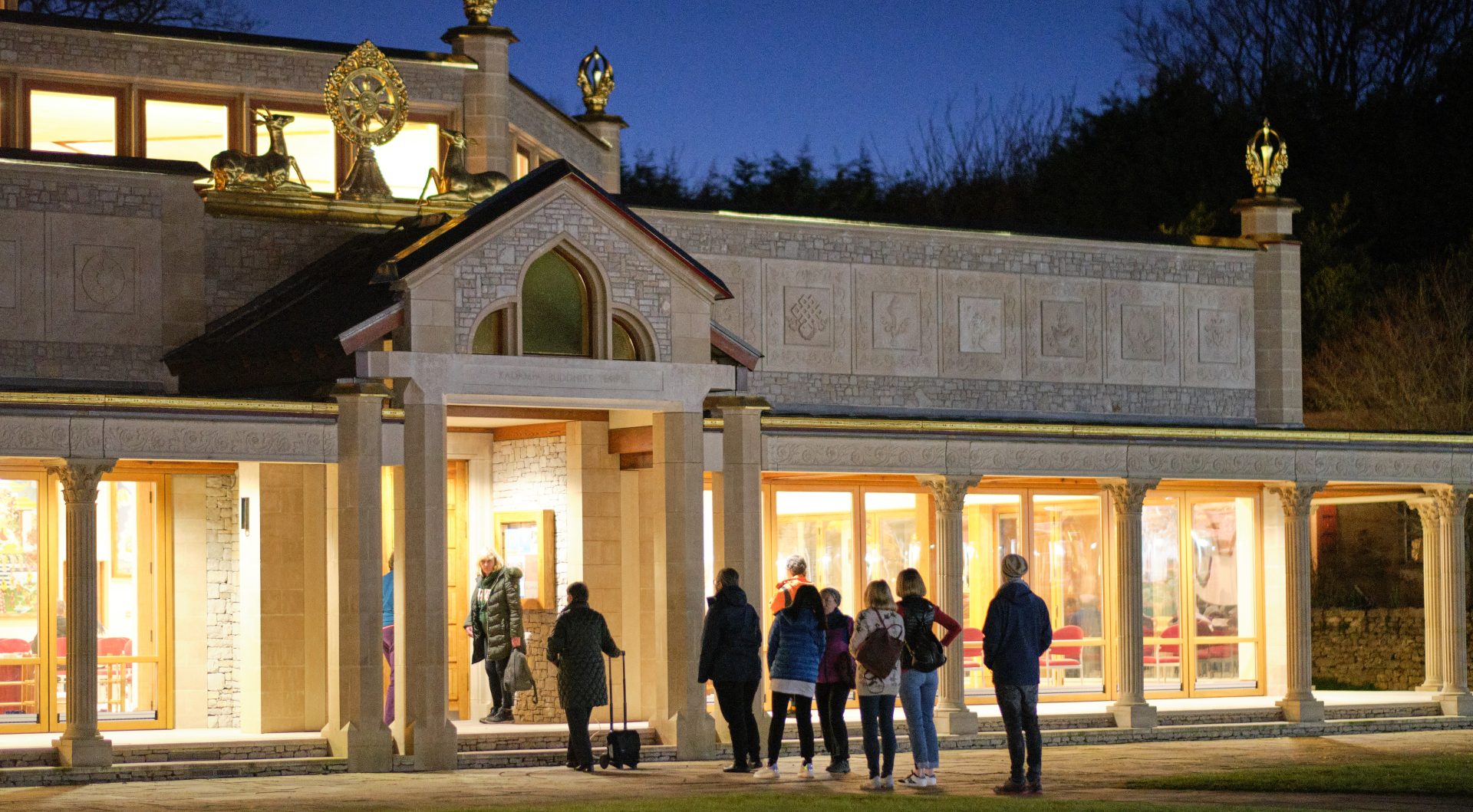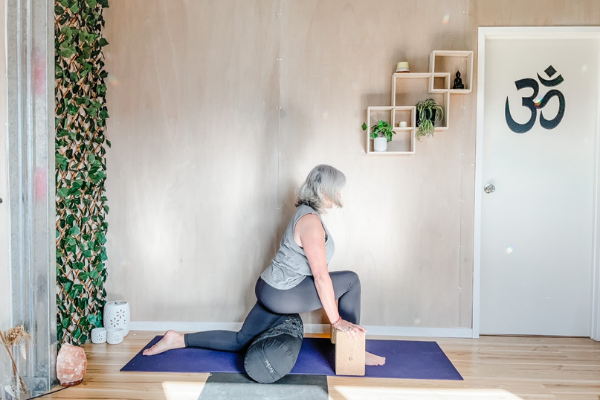What Buddhism Looks Like in Modern-Day Turkey
Tracing the dharma in “the land of four seasons” The post What Buddhism Looks Like in Modern-Day Turkey appeared first on Tricycle: The Buddhist Review.

Between the East and the West, or, in earthly terms, Asia and Europe, there is a place that could more accurately be described as a middle way than a fixed point, as it flows from north to south. In English, it is the Bosphorus, or, in the local language of Turkish, “Bogaz,” literally meaning throat, but in this context, strait. The waterway that divides the transcontinental city of Istanbul is home to the core contingent of the Turkish Buddhist sangha that has welcomed close to 350 devotees in the last ten years, 108 of whom have completed at least five years of study.
The Turkish Buddhist sangha is led by its founder and first teacher Cem Sen (his surname is pronounced as Shen). The origins of Turkey’s Buddhist sangha, as well as Sen’s life’s work as a lay practitioner of Buddhism, reflect Turkey’s tendency to turn Western narratives upside down, as it can be said that contemporary interest in the original teachings of the Buddha spread to Turkey not from the East but from the West.
As a boy, Sen looked out over the Aegean Sea in his hometown of Izmir, a largely liberal city on the shores of western Turkey, across from Athens. Questioning the meaning of life at age 6, Sen did not feel spiritually fulfilled by the Islam of his upbringing. He experimented with Transcendental Meditation by age 14. Later, his sister introduced him to two of her friends, American NATO officers, who led Sen to martial arts training—kendo, judo, karate, aikido.
While interested in how these East Asian teachings fused mental acuity and bodily discipline, Sen’s inspiration to pursue further training came not from the quickening movements of his limbs, nor the deepening stillness of his posture, but from the philosophical concepts they conveyed. Catching a ride to Istanbul with his sister, a budding artist, Sen would find a close-knit group of fellow seekers interested in Buddhism, yoga, meditation, and martial arts, mostly approaching the topics intellectually, through reading books translated into Turkish from English. Among them, author Ilhan Gungoren was a key figure, encouraging Sen to pursue immersive approaches to the subjects that would later define his vocation.
“After I finished high school, I gave myself two years of sabbatical. I said this education system ruined my mind so much. It indoctrinated me. I wanted to free my mind,” Sen tells Tricycle. “I started to become interested in Zen meditation, zazen. I was trying to learn from books. [Many of] these books were written by a Turkish gentleman named Ilhan Gungoren.”
Gungoren is known for introducing risqué topics concerning Daoist sexuality and the Kama Sutra to the relatively conservative Turkish audiences of the 1980s. A countercultural trendsetter, Gungoren became known for his media appearances in addition to his books, including stints guesting on national television where he calmly discussed the conservative society’s cultural taboos.
Sen refers to Gungoren as the father of Zen Buddhism in Turkey, as his books were taught at the prestigious Language, History and Geography Faculty at Ankara University. After their first encounter, Gungoren took Sen under his wing as his assistant and student, teaching him how to write, edit, and translate books. Gungoren’s publishing house, Yol Publications, was one of the only sources of education focused on transmitting East Asian philosophies to Turkish readerships.
 Cem Sen giving a dhamma talk on the Buddha’s life while on pilgrimage in Nepal. Photo courtesy of Sen.
Cem Sen giving a dhamma talk on the Buddha’s life while on pilgrimage in Nepal. Photo courtesy of Sen.At 20 years old, Sen began taking over for Gungoren, teaching meditation, tai chi, and qigong. In 1989, the nascent Turkish sangha began formal Zen training. In time, the sangha—which included intellectuals, professors, and authors of the region—asked Sen to lead the organization. “I was so young that I refused,” he said. He was only 21 years old.
In 1996, after years of Zen training, Sen published his first book, titled Zen and the Art of Getting On and Off a Minibus, which has not been translated from Turkish. The book outlines his path and methods for integrating Buddhist teachings in Turkey, but, as he explains it, his dharmic education did not follow a linear chronological order. “After I started to pursue the Daoist approach, I spent around ten years learning from different masters such as Mantak Chia, Eric Steven Yudelove. I also practiced shamanism with different teachers who were coming from Michael Harner’s approach to Shamanism,” Sen tells Tricycle.
While he had originally felt the road to enlightenment by way of Zen was vague as a gateway to realize fundamental Buddhist principles, he eventually found himself attracted to the Rinzai school as well as the southern Chan school of Shaolin. “In 1998, I began to travel to East Asia to learn from different teachers. During these travels, I met teachers such as Master Jian Feng, Master Fu Wei Zhong, Master Zhou Zhou, Master Wu Hong Shen, but my main master was [the late] Jiang Feng.” Guided by these popular teachers, Sen traveled across Asia to China, Thailand, Malaysia, and Indonesia and spent the next fifteen years learning Buddhist as well as Daoist concepts, the latter of which he now introduces to his first-year students before presenting the basics of Buddhism.
“I insist on preparing my students before I teach them Buddhism. In Turkey and everywhere in the West, as far as I understand, there are different expectations from spiritual disciplines than what in fact this discipline really promises,” Sen explains. “Usually the expectation is to give joy and to relieve all of your problems. When you’re entering into Buddhism, it’s a little bit different. It will answer your expectations, but there’s something beyond it.”
In a typical year, more than half of new students will drop out. The students that do stay on for the second year then represent a more focused and determined group. For this class of sophomores, Sen gives teachings based on the early Pali sutras of the Buddha, which he and his students render into Turkish from the English translations of Bhikkhu Bodhi.
“The Buddhist practice or philosophy that I’m teaching is the original teaching of the Buddha, which is based on suttas, or the Buddha’s own teaching about Buddhism,” Sen tells Tricycle. “The Buddha has a really very step-by-step approach to purifying the mind. I prefer the phrase ‘purifying the mind’ instead of enlightenment.”
Basic training with Sen takes three years. Students pay for weekly lessons in the form of one-on-one discussions or small group talks accompanied by Sen’s assistant teachers who have committed themselves to a requisite fifteen years of study prior to teaching. By the fourth year, classes are free.
Sen identifies as a lay teacher and appreciates the unique significance of lay followers, citing the Buddha’s words, referring to their special contribution to the spread of wisdom. Yet he is acutely aware of the fact that the Turkish sangha is not opening a monastery in the immediate future, with religious diversity not being broadly accepted in Turkey at this time.
“Since Buddhism is a new thing in Turkey, as [with] everything new in every country, there must be a person to lead the way. There are of course a lot of challenges, difficulties, et cetera. I think it was my duty in Turkey to do this. I haven’t seen [anyone else try] to do this,” says Sen.
There is a consensus among Sen and his students that although others earnestly attempt to align Turkish interests with Buddhism, there are no comparable teachers or consistent efforts in this regard outside of what Sen has established. While others in Turkey have appreciated the gifts of a Buddhist practice, many have chosen not to be as open about it.
Near the coast of the Marmara Sea on the Asian side of Istanbul, there is an outpost of the World Social Buddhism movement—the Yun Hwa Dharma Sah meditation center. This center was founded by German-Turkish practitioner Cengiz Oezcan, whose interest in Buddhism began in 1998 on a retreat in Paris.
“We opened our center in Turkey eleven years ago. At that time I conducted research about what exists in Istanbul in terms of Buddhism. I found almost nothing except one or two people who offered meditation courses,” said Oezcan, who, though based in Hamburg, opens the center in Istanbul intermittently, for a few months at a time.
“We can say we are the first generation.”
“Even if people are not religious, many of the aspects of Islam are in daily life, and Buddhism is seen as another religion. That’s why people are reluctant to follow another religion. That’s why we also try not to put Buddhism forward but focus more on meditation,” says Oezcan. “We try to be seen more as a meditation center than as a Buddhist center.”
In the 1990s, just as Sen was prepping the first modern Turkish sangha, Alexander Berzin, scholar of Tibetan Buddhism, presented a historic study of Buddhist-Islamic relations. He went to Turkey, as well Uzbekistan, Kyrgyzstan, Kazakhstan, even visiting Xinjiang’s Kalmyk Mongols in 1994, mainly to speak about Buddhism with groups of professors at academies of science.
“I found that the professors were open and very interested in Buddhism,” said Berzin, whose articles appear on his popular education portal StudyBuddhism.com, which, in 2023, had 29,000 visitors from Turkey who read a total of 46,000 articles in Turkish. “From the statistics [of the] people who go to the Turkish site, I was very impressed with the articles they were looking at. They were really serious people looking at the very basic, fundamental things about Buddhism; what’s the dharma, what’s the sangha, the eleven ways of being of benefit to others.”
In the Turkish sangha, first-year students go on two one-week retreats in a rented center near Canakkale, in the westernmost region of Turkey, Thrace. The retreats increase in length and intensity each successive year. It is the closest thing to Buddhist monasticism offered in Turkey. Retreatants typically eat once and meditate four times daily, and also assemble for discourses on the dharma.
“For the sangha, we are creating a kind of group we call hitasukha, meaning to be happy now and in the future,” says Sen, who notes that Turkish Islam and Turkey’s secular culture are uniquely receptive to Buddhist pragmatism. “As you know, there is a Sufi tradition in Turkey, and if you consider the Sufi tradition in the past, it is very similar to some of the aspects of Hindu or Buddhist [traditions], monastic style, et cetera. Our culture is not very far from the Buddhist approach.”
 Sen and his sangha during their annual end-of-the-year gathering in Istanbul. Photo courtesy of Sen.
Sen and his sangha during their annual end-of-the-year gathering in Istanbul. Photo courtesy of Sen.While 99 percent Turkish, Sen’s students represent the spectrum of Turkey’s diversity, especially when it comes to the distinctive range of local religious and secular backgrounds. Unlike Western Europe and the Americas, Turkey’s modernization ushered in state-sanctioned, government-imposed secularism commandeered by the first Turkish president, Kemal Ataturk. Yet both conservative Muslims and nonreligious atheists enter the Turkish sangha under Sen.
“We try to establish it in the Turkish context in a way that it will be suitable for Turkish people, because we are mostly Western, very close with Western thinking, attitudes, habits. We try to bring it in line with the Turkish mind so that our students can understand and apply it in their daily life,” said Ufuk Cakmakci, who began Buddhist training with Sen in 2009.
One of Sen’s early students, Cakmakci found Buddhism despite his upbringing in a secular, military family in which rationalism was held as supreme and religious sentiments were disdained. His wife, Gulfem, joined him in studying with Sen in 2010.
“Thanks to my destiny, I met Cem Sen, our teacher … and, in the beginning I didn’t even know that we were going to study dharma. In the first year, it was more like qigong, or how to relax, how to get rid of stress from the body,” said Gulfem Cakmakci. “It’s not about the outer world. It’s about the inner world.”
Buddhism’s popularity increased as Westernization accelerated in Turkey following the country’s 1980 military coup. With this increased Westernization came the normalization of consumption-focused capitalism, which Buddhist teachings are well-positioned to confront. Sen guides his students to meditate on the four noble truths of suffering, desire, liberation, and the Middle Way.
“We do not study Buddhism in Turkey. We have adapted the Buddha’s teachings, the dharma, to our culture,” says Mustafa Yucelgen, who, together with his wife Nihal Sirin, has studied with Sen since 2013.
“During [Sen’s] teacher’s times, there was no sangha or systematic approach or studies. It was more like friends coming together to talk about the philosophies of Zen teachings. They didn’t take further steps [then],” he says about Sen’s early years. “We can say we are the first generation.”
When asked about the risks of pursuing lay Buddhist training while enmeshed in a family and a career in Turkish society, Sen notes that students who progress begin to let go of greed, jealousy, and anger, purifying unhealthy ambition and its materialist excesses to the extent that they are more relaxed about social norms. As one of his first students, Ufuk Cakmakci, attests, the more one lets go of social mores, the better one is at seamlessly integrating into society.
“This really started after six, seven years of practice, when people [started] seeing our intentions, the way we behave. There was less interest in becoming more successful… And that made us more successful, basically,” says Cakmakci. “Because I’m more relaxed, I can connect with people in a safer way, in a more careful way, in a much more direct way as well. That contributes to success. The path works paradoxically.”

 ValVades
ValVades 






























